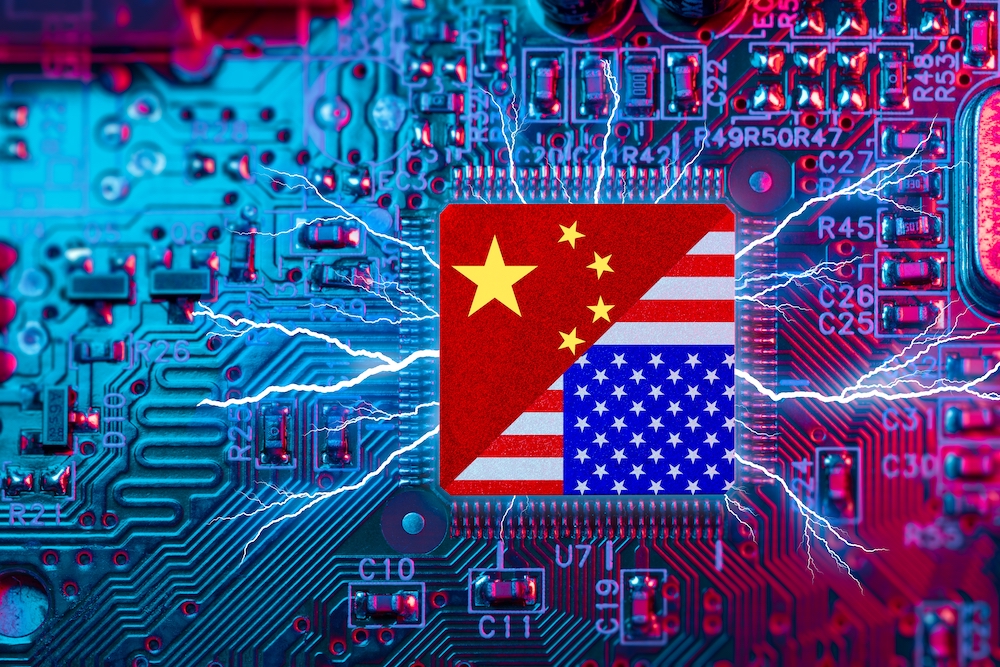
Posted November 22, 2023
By Ray Blanco
The Silicon Curtain
As China races in an attempt to capture technological supremacy, and the US fights as well, the technology sector continues to fork into two separate markets.
The once global tech ecosystem continues to split as a “silicon curtain” descends across the digital stage. The original Cold War iron curtain, backed by tanks, guns, and warplanes, split Europe and much of the world into two competing political domains. The new silicon curtain, backed by chips, is also splitting the tech world in half.
Another step has been taken to delink US’ involvement in China-led efforts in breakthrough technologies as the Biden administration took steps to limit Chinese access to US resources, including semiconductors, quantum computing, and artificial intelligence.
The measures follow past steps blocking sales of advanced chip-making equipment and semiconductors to the CCP, including export bans on our most advanced chip-making equipment and Nvidia’s top AI hardware.
But the building of the silicon curtain has blocked technology transfer in both directions, as with the prior blockade of advanced Chinese 5G network equipment and even smartphone handsets in the US.
Advanced computational tech has multiple uses. The same technology that can enable hyper-fast wireless networks and conversational artificial intelligence can also be used on the battlefield for intelligence, surveillance, guidance systems, and much more.
If the war in Ukraine is any guide, even inexpensive generalist commercial off-the-shelf technology can be quickly adapted to have devastating consequences.
As the US learned during the Cold War, holding the tech high ground is one of the keys to victory. China has learned this lesson also and has been fighting back, blocking the use of Western-made computer components in network infrastructure applications at home, affecting Micron’s market in the country.
More recently, the CCP has enacted export curbs for technology metals like gallium and germanium in an attempt to cripple offshore competition.
The benefits of the tech sector, built on a global semiconductor ecosystem with hundreds of contributors, ranging from raw materials producers, equipment makers, chip makers, and design companies, are being steadily dismantled.
That ecosystem was very successful, enabling ever more powerful computers at lower prices. It also built a global network connecting everyone that completely changed our economy starting in the late 1990s.
Will technology advancement stagnate as the silicon curtain descends?
While it will certainly be a different environment, history suggests otherwise...
The pressures of the Cold War helped seed and expand chip technology to almost unimaginable levels of capability and complexity, from the creation of silicon-based semiconductors and integrated circuits to the internet itself.
What we are losing from the great tech split we could well gain, and then some, as the fight for the most advanced technology moves from just being a commercial imperative to a geopolitical one.
On our side of the silicon curtain, we can compete. We have massive resources in terms of population and expertise, and the ability to attract the finest talent anywhere in the world.
On both sides of the Pacific, hundreds of billions are being spent to achieve tech supremacy. In the US, billions have been allocated through the recent CHIPS and Science Act.
Outside China, huge new chip fabs are being built to reduce dependence on CCP-originated semis and reduce supply chain risk from friendly but geopolitically vulnerable producers like Taiwan.
Top American chip makers are doubling their efforts as the stakes of this new Cold War continue to rise. There are hopes that chips containing a trillion transistors each can hit the market by the end of the decade.
Neatly printed with a serial number and a label stating: “Made In The United States of America.”

